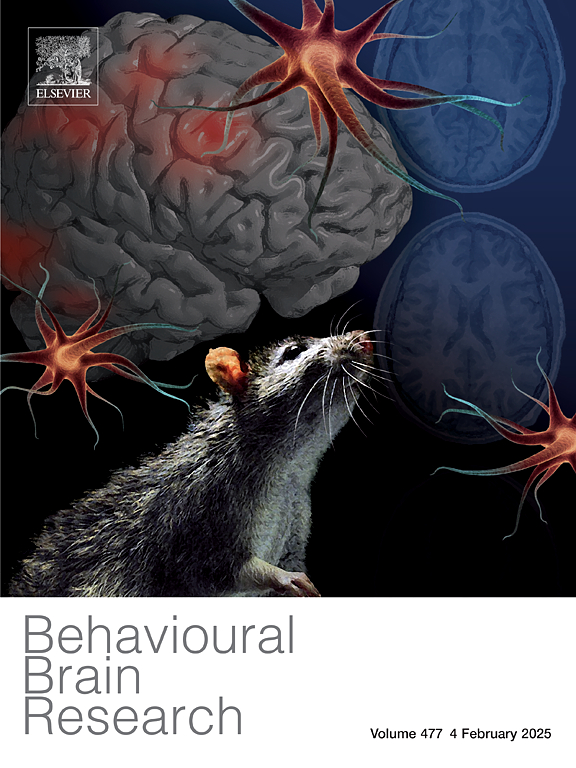欺骗的神经认知基础:社会欺骗任务中n2相关冲突监测的个体差异。
IF 2.6
3区 心理学
Q2 BEHAVIORAL SCIENCES
引用次数: 0
摘要
冲突监测作为欺骗的神经认知过程进行了研究。为了研究社会欺骗任务中冲突监测的个体差异,我们采用脑电图额-中N2分量。96名参与者(男性48人)在两种实验条件(情感与中性)下如实或欺骗性地报告了先前学习过的面孔的可信赖性或不可信赖性,并完成了德国BIS/BAS量表和冲突监测问卷-44。为了评估结果的稳健性,使用三种不同的量化方法对N2进行了量化。无论真实性如何,不可信刺激与可信刺激对N2峰间振幅的影响均为负向,表明其对负向情感的敏感性。所有被调查的特质对冲突监测的个体程度均无显著影响。在欺骗过程中冲突监测的检验中,峰间振幅最适合于N2的量化。结果表明,真实回答的反应时间更短,正确率更高。由于图片型主效应的显著性随N2量化方法的不同而不同,评估可靠性数据和检验范式参数可以阐明不同N2量化方法对获得优异可靠性的影响。本文章由计算机程序翻译,如有差异,请以英文原文为准。
The neurocognitive basis of deception: Individual differences of N2-related conflict monitoring in a social deception task
Conflict monitoring was investigated as a neuro-cognitive process of deception. To investigate individual differences of conflict monitoring during a social deception task, we employed the fronto-central N2 component of the electroencephalogram. N = 96 participants (male = 48) reported the trustworthiness or untrustworthiness of previously learned faces in two experimental conditions (affective vs. neutral) either truthfully or deceptively and completed the German BIS/BAS scales and the Conflict Monitoring Questionnaire-44. For an assessment of the robustness of the results, the N2 was quantified using three different quantification methods. Peak-to-peak N2 amplitudes were more negative following untrustworthy vs. trustworthy stimuli regardless of the truthfulness, indicating their sensitivity to negative affect. None of the investigated traits had a significant effect on the individual extent of conflict monitoring. The peak-to-peak amplitude appeared to be most suitable for quantifying the N2 in the examination of conflict monitoring during deception. Results indicated shorter response times and higher correct rates for truthful responses. Since the significance of the Picture type main effect varies with the N2 quantification method, assessing reliability data and examining paradigm parameters could clarify the impact of different N2 quantification approaches on achieving excellent reliability.
求助全文
通过发布文献求助,成功后即可免费获取论文全文。
去求助
来源期刊

Behavioural Brain Research
医学-行为科学
CiteScore
5.60
自引率
0.00%
发文量
383
审稿时长
61 days
期刊介绍:
Behavioural Brain Research is an international, interdisciplinary journal dedicated to the publication of articles in the field of behavioural neuroscience, broadly defined. Contributions from the entire range of disciplines that comprise the neurosciences, behavioural sciences or cognitive sciences are appropriate, as long as the goal is to delineate the neural mechanisms underlying behaviour. Thus, studies may range from neurophysiological, neuroanatomical, neurochemical or neuropharmacological analysis of brain-behaviour relations, including the use of molecular genetic or behavioural genetic approaches, to studies that involve the use of brain imaging techniques, to neuroethological studies. Reports of original research, of major methodological advances, or of novel conceptual approaches are all encouraged. The journal will also consider critical reviews on selected topics.
 求助内容:
求助内容: 应助结果提醒方式:
应助结果提醒方式:


